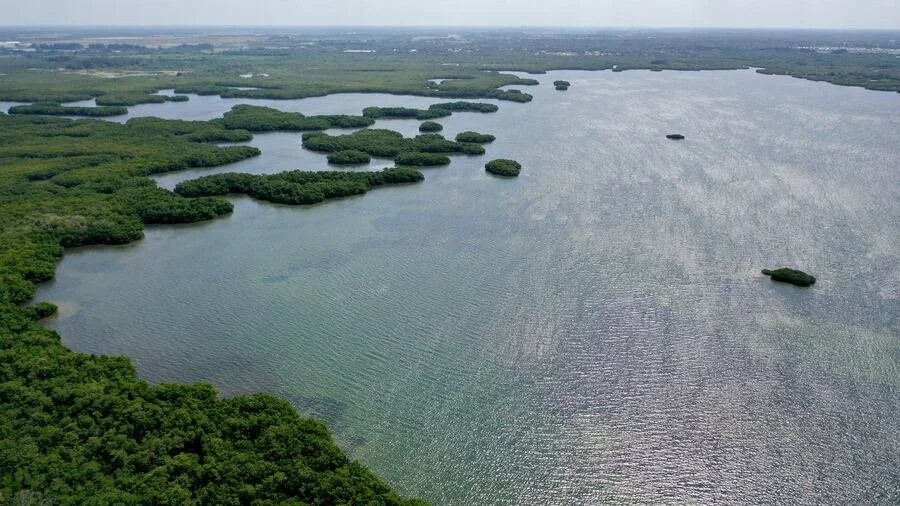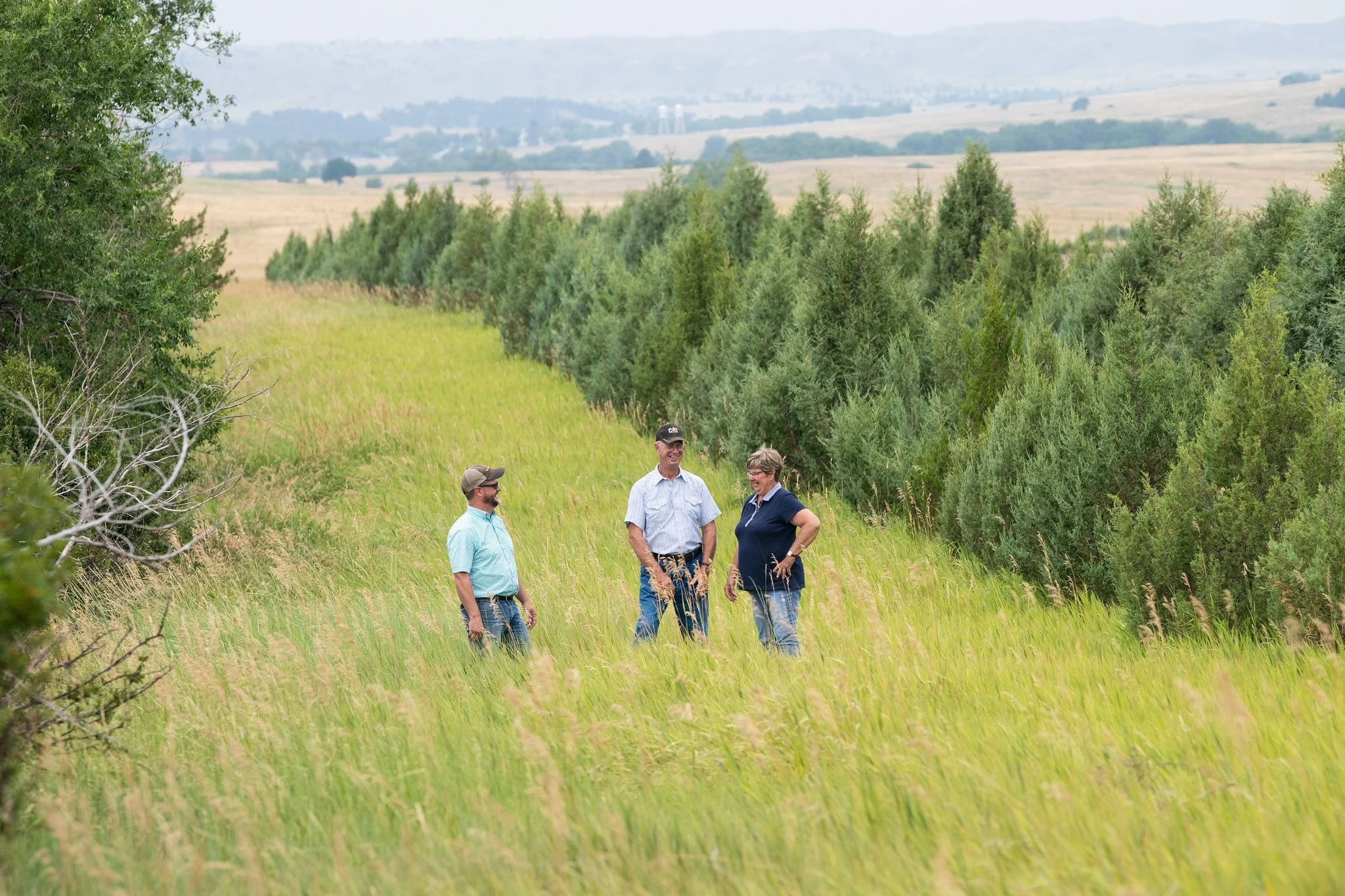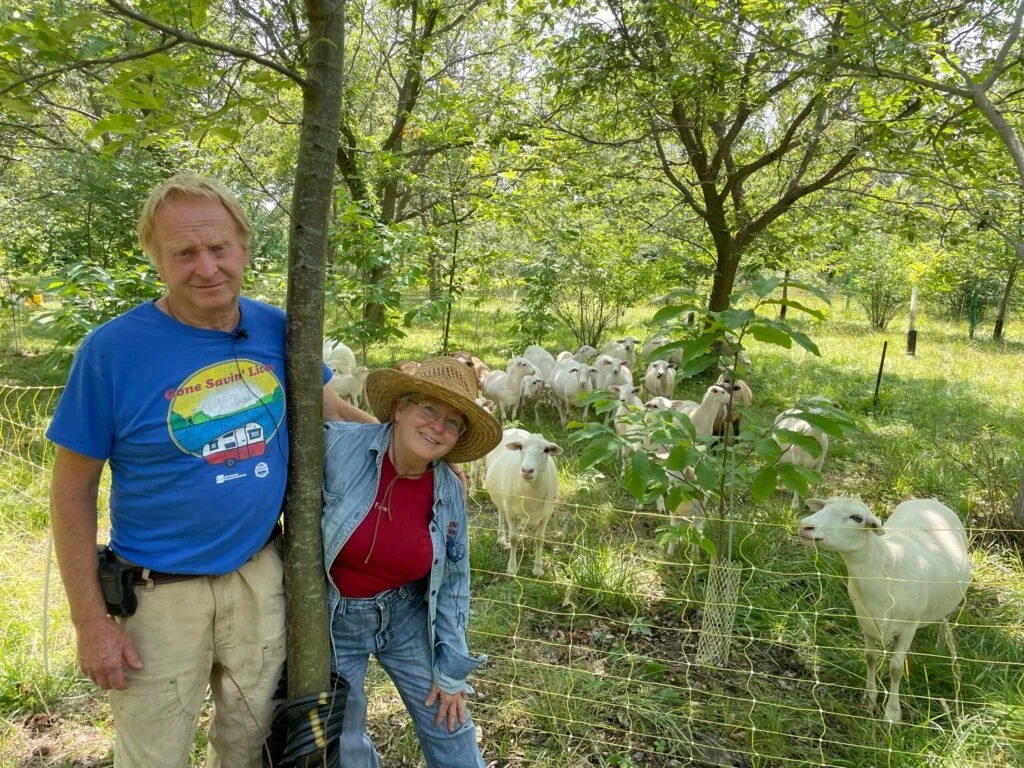Nature-Based
Climate Solutions
What if restoring the planet wasn’t about sacrifice, but reciprocity?
Across the United States, farmers, forest protectors, Tribal nations, scientists, and community leaders are working with nature to draw down carbon, protect biodiversity, and build resilience.
These nature-based solutions are rooted in American landscapes, centuries-old practices, new approaches to land management, and local wisdom. From the Great Plains to the Gulf Coast and up through the Pacific Northwest, these approaches are proving that what’s good for ecosystems can also fuel local economies, support public health, and secure our future—if we scale them wisely and equitably.
Though currently practiced on less than 2% of U.S. farmland, agroforestry and other nature-based solutions offer some of the highest returns per acre in terms of climate, economic, and ecological value. Alley cropping, for instance, sequesters up to 1.45 metric tons of carbon per hectare per year, while windbreaks can store more than 3.5 metric tons — far exceeding more conventional strategies.
Nature-based solutions have the potential to deliver the equivalent of 21% of needed climate mitigation in the United States by 2030 while also providing long-term co-benefits for local ecosystems and economies. 1
Promising sectors
There are many pathways for conserving and restoring natural systems to help sequester and store carbon while enhancing resilience, biodiversity, clean water, and local economies. These include:
-
Mature (old growth) forests store immense amounts of carbon and support irreplaceable, complex webs of life. Once logged, these older forests cannot be replaced. Richard Powers was right: you can’t come back to something that is gone.
-
Reforestation holds huge promise when done well with attention to diversity of species, tiered canopies, and longer rotations for those forests that are actively managed for wood and paper products.
-
Carbon-rich farming rebuilds degraded soils, reduces emissions, and increases food security. A growing number of farmers and ranchers are adopting cover crops, rotational grazing, composting systems, and other practices that help sequester carbon while restoring soil health.
-
Conservation and restoration of grasslands are crucial for our climate and for biodiversity.
-
In Florida and along the Gulf Coast, coastal bulwark ecosystems serve as natural storm buffers and carbon vaults. Protecting them sustains coastal communities and marine life.
-
From Cleveland to Atlanta, cities are greening their communities to address rising heat while providing a refuge for urban dwellers.
-
America has lost more than 50% of its wetlands. Now, communities from the Mississippi River basin to California’s Central Valley are restoring these flood-buffering, water-filtering, and carbon-rich landscapes.
-
This is one of the fastest growing and most promising pathways for our climate, food security, and biodiversity. Blending trees into farmland, through silvopasture, alley cropping, riparian buffers, forest gardens, and windbreaks, offers long-term wins for people and the planet. Some of these reflect long-standing Indigenous land practices.
Spotlight on agroforestry
Agroforestry, the intentional incorporation of trees and shrubs into working farms, is one of the most promising tools we have for climate resilience, ecosystem restoration, and rural prosperity. It’s an area we have invested in consistently for several years, working in partnership in particular with the Savanna Institute and the Agroforestry Coalition to help advance sustainable, symbiotic solutions.
Agroforestry systems like silvopasture, alley cropping, riparian buffers, forest gardens, and windbreaks deliver multiple wins: they diversify income, restore soil health, improve water retention, and reduce the need for fertilizer. As these systems mature, they build long-term resilience against drought, erosion, and extreme heat, while also storing significant amounts of carbon and supporting animals.
See these systems in action
Explore our interactive map and case study gallery here, featuring real-world examples of nature-based climate solutions from across the country.
Why we love agroforestry
About 1.45 and 3.56 metric tons of carbon removed per hectare each year through alley cropping and windbreaks, respectively.
Runoff reduction of up to 52% with agroforestry buffers vs grass buffers
Increase yields per acre by 56% vs annual crops
Up to triple the income over a 10-year period vs annual cropping systems
Natural shade and shelter reduce heat stress and improve animal health (reference citations 2, 3, 4, 5, and 6, respectively)
Agroforestry on the ground
Red Fern Farm
Red Fern Farm in Iowa is a working model of ecological farming and long-term economic resilience.
Tom Wahl and Kathy Dice are managing more than a tree and nut farm in southeastern Iowa. For more than 30 years, they have been running a living experiment in how American landowners can future-proof their land while increasing biodiversity, storing carbon, and feeding people.
Visit Red Fern, and you may forget you’re looking at a farm. Instead of vast fields of corn or soybeans, common in this region, you’ll see dense groves of chestnuts, pawpaws, and heartnuts rising above a forest floor loaded with mushrooms, medicinal herbs, and native grasses. Over the last two decades, Tom and Kathy have transformed their land into a system that produces nutrient-dense food, stores carbon, and resists the worst of climate extremes. and the land largely takes care of itself.
And it’s worked. A 2022 study led by Dr. Yang and Dr. Eddy showed significant improvements in soil health and carbon sequestration across the farm’s diverse polyculture systems, with soil carbon stocks about 15% higher here than in nearby annual row-crops. Older plantings held up to 50% more soil organic matter than the youngest ones. University of Illinois researchers confirmed that only forest soils sequestered more carbon than Red Fern’s mature agroforestry fields.
“These trees are grabbing carbon out of the air, putting it into their limbs, their trunks, and their roots. Our system is absorbing a great deal of carbon,” said Tom and Kathy in a 2022 interview.
The reality is – Tom explains – long days and seasons of hard work. Even self-sustaining systems, existing in a complex and dynamic space with human interference, are not “set it and forget it.” Breaking even on this type of operation can take 3 to 10 years, and the weather offers no guarantees. But take a higher view, from the canopy of an old-growth chestnut, and the answer comes into focus: long-term benefits for the soil, climate, ecosystem, and local communities. Through an iterative approach, making “all the mistakes - every last one of them,” the couple has built a sustainable living out of their 10 acres of chestnut trees, working in harmony with the land.
Like the chestnut trees they plant, Tom and Kathy give without fanfare. They serve as mentors and role models for young farmers and landowners across the Midwest, present at the Savanna Institute’s annual meetings, and share findings and advice with researchers, nonprofits, and the local community. Their farm demonstrates a deeper truth: that resilience grows when wisdom is shared, and that some of the most lasting contributions are the ones made steadily and quietly, year after year. Learn more on the Red Fern Farm website.
.
More nature-based solutions in action
These case studies span a range of nature-based strategies. They are just a tiny sample of what is happening around the globe as indigenous communities, student groups, government agencies, scientists and regular people take positive action to protect and restore ecosystems, with benefits in carbon sequestration, biodiversity, water, food, local communities, and beyond.
1 - Natural climate solutions for the United States. Science Advances. 14 Nov 2018. Vol 4, Issue 11. DOI: 10.1126/sciadv/aat1869
2 - Wersan, K., et al. (2023). Catalyzing Agroforestry in the Farm Bill. Agroforestry Coalition Policy Paper.3 - Udawatta, R., Garrett, H. & Kallenbach, R. (2011). Agroforestry Buffers for Nonpoint Source Pollution Reductions from Agricultural Watersheds. Journal of Environmental Quality, 40 (p. 800-806). https:// acsess.onlinelibrary.wiley.com/doi/ abs/10.2134/jeq2010.0168.
4 - Smith, M., Bentrup, G., Kellerman, T., et al. (2021). Windbreaks in the United States: A systematic review of producer-reported benefits, challenges, management activities and drivers of adoption. Agricultural Systems, 187. https://doi. org/10.1016/j.agsy.2020.103032
5 - Equilibrium Capital. (2013). The Opportunity in Permanent Crops. https://eq-cap.com/ wp-content/uploads/2020/05/ The_Opportunity_in_Permanent_ Crops-2013_09_04.pdf
6 - The Organic and Non-GMO Report. 2024. Savanna Institute aims to make agroforestry the norm in the Midwest. https://non-gmoreport.com/articles/savannah-institute-aims-to-make-agroforestry-the-norm-in-the-midwest






